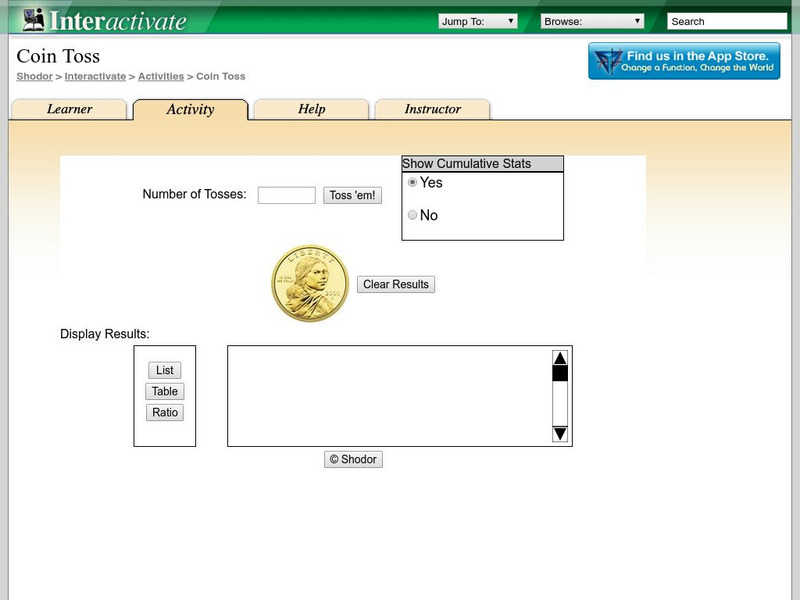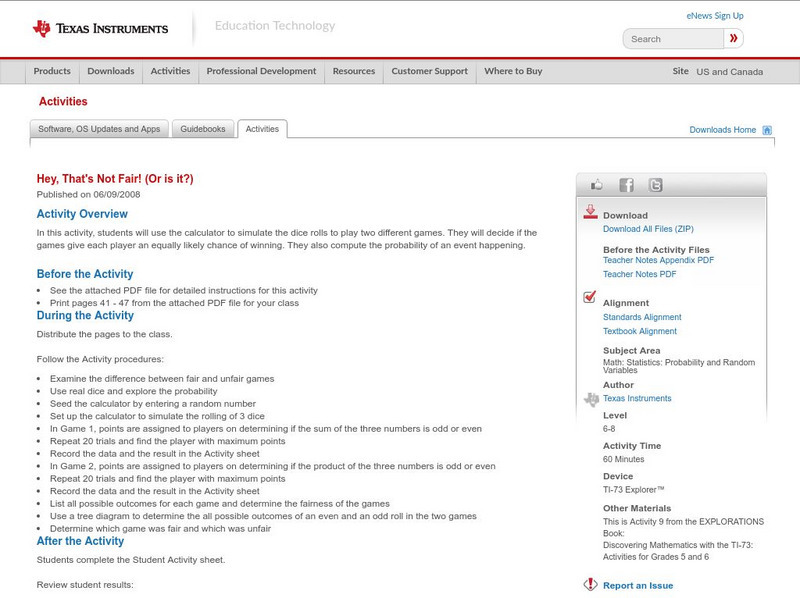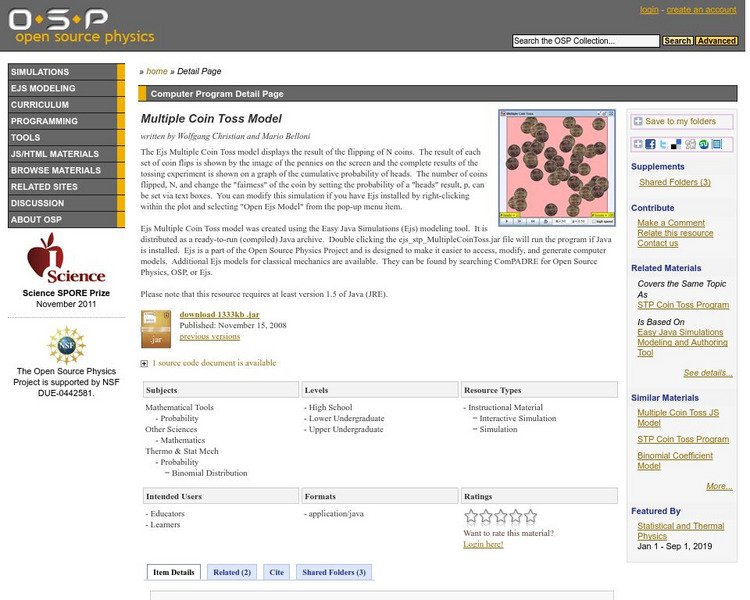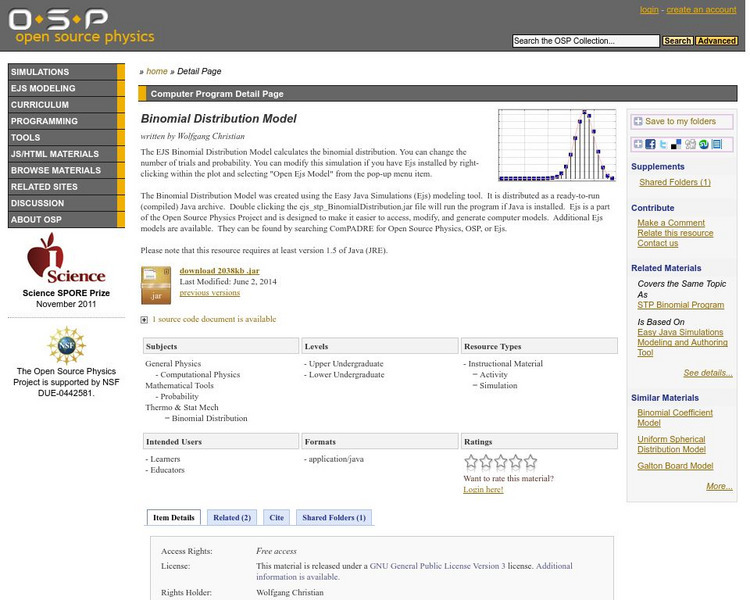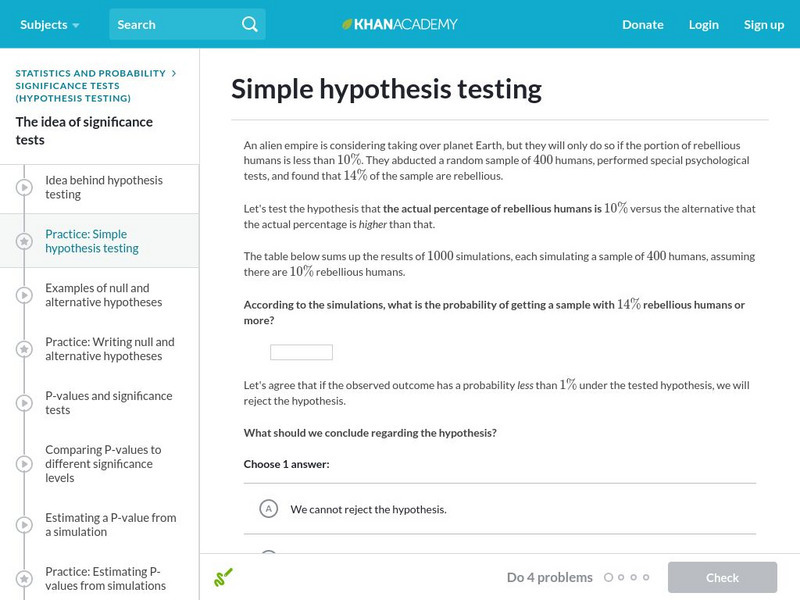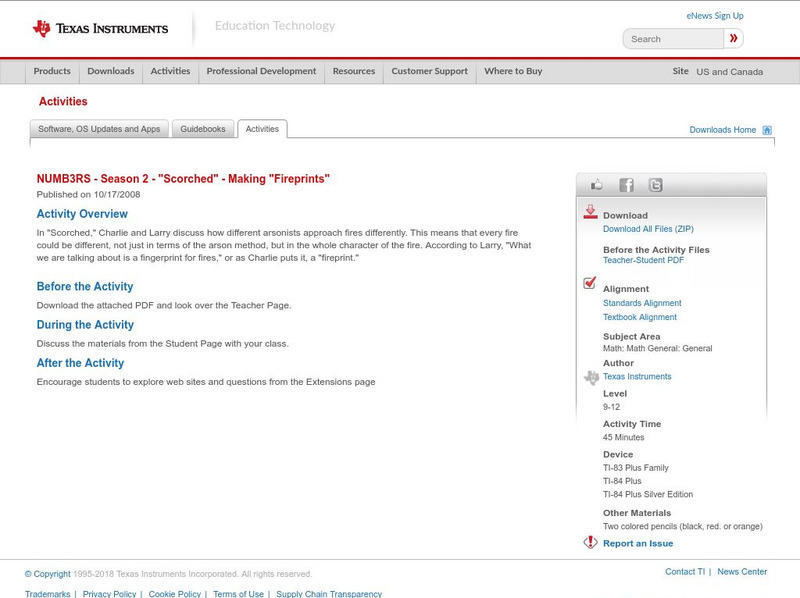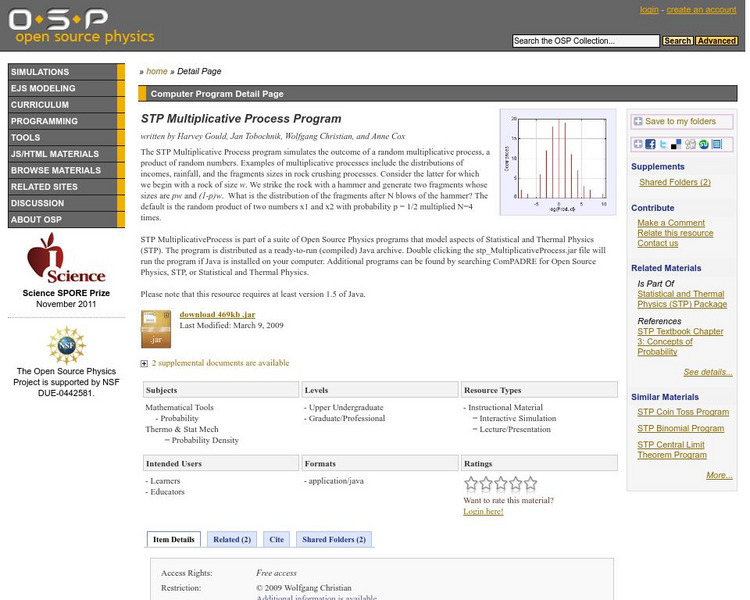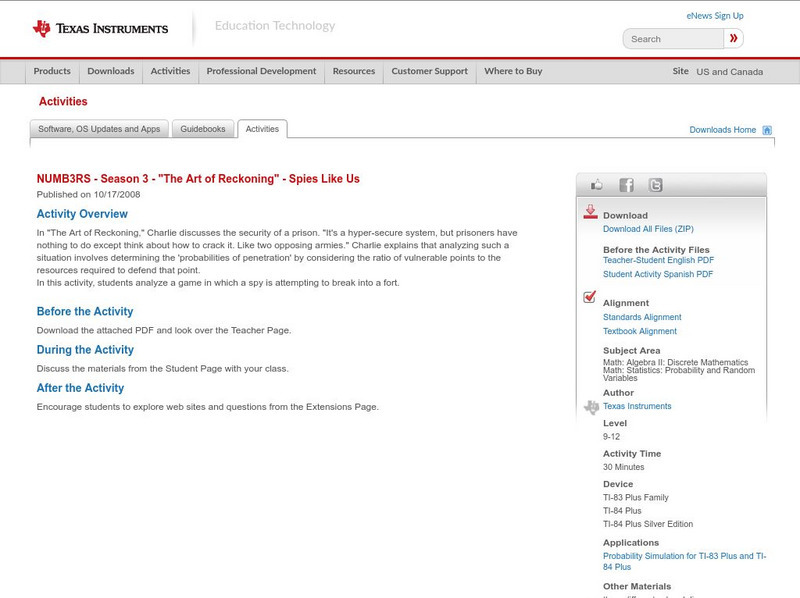Hi, what do you want to do?
Shodor Education Foundation
Shodor Interactivate: Coin Toss
A simple coin-toss simulation through which students explore experimental probability. Accompanied by links to related activities, discussions, worksheets, and materials for instructors.
Shodor Education Foundation
Shodor Interactivate: Directable Fire!!
Run a simulation of how a fire will spread through a stand of trees, learning about probability and chaos.
Texas Instruments
Texas Instruments: Hey, That's Not Fair! (Or Is It?)
In this activity, students can use the calculator to simulate the dice rolls to play two different games. They will decide if the games give each player an equally likely chance of winning. They also compute the probability of an event...
University of Cambridge
University of Cambridge: Maths and Sports: Archery
Use our interactivity to simulate picking up a bow and some arrows and trying to hit the target a few times. Can you work out the best settings for the sight? This activity gives an opportunity to gather and collate data, and to test...
Shodor Education Foundation
Shodor Interactivate: A Better Fire!!
Students run a simulation of how a fire will spread through a stand of trees, learning about probability and chaos.
Success Link
Success Link: Exploring Limits and Recursive Sequences
A well laid-out lesson plan that uses a classroom simulation to show the medicine level in the body over a period of time. Students track on a chart the process of intake/elimination and problem solve what happens to the medicine over time.
Texas Instruments
Texas Instruments: Spin Me Along
Students explore probability and patterns in fractions, decimals, and percents by spinning three spinners and recording and analyzing the results.
Texas Instruments
Texas Instruments: Tiles in a Bag
How many tiles would you have to pick to be confident that your estimated probability truly represents the situation? In this activity, you will draw a tile from a bag, record its color and put it back in the bag. The bag contains 24...
Shodor Education Foundation
Shodor Interactivate: Racing Game With One Die
Simulate a game where two players each roll a die, and the lucky player moves one step to the finish.
University of Illinois
University of Illinois: A Short Lesson in Probability
This site from the University of Illinois gives a simulation and then asks questions about it.
American Association of Physics Teachers
Com Padre Digital Library: Open Source Physics: Multiple Coin Toss Model
Students explore flipping multiple coins through this downloadable java simulation. The complete results of the tossing experiment is shown on a graph of the cumulative probability of heads.
American Association of Physics Teachers
Com Padre Digital Library: Open Source Physics: Binomial Distribution Model
This downloadable mathematics java simulation explores the binomial probability distribution model. The probability and number of trials can be changed to see the effect on the distribution model.
Education Place
Houghton Mifflin: Eduplace: Extra Practice Quiz Which Spinner Is Fair?
Decide which spinner is fair for each of the probability examples presented. Read the interactive quiz rules and then click on the "Begin" ticket. If you answer incorrectly you get one more chance to try again then you are told the...
Science Buddies
Science Buddies: The Effects of Card Counting on a Simple Card Game
If you enjoy playing cards, this project will get you thinking about strategy in card games and help you become a better card player. Explore probability using computer simulations and the practice of counting cards.
Other
Utah St. Univ.: Coin Tossing Applet
An interesting Applet that simulates the toss of a coin 100 times. A quick count of the results and an accompanying graph make this site useful for both teacher and student.
Khan Academy
Khan Academy: Simple Hypothesis Testing
Show that you have mastery over the idea behind hypothesis testing by calculating some probabilities and drawing conclusions. Students receive immediate feedback and have the opportunity to try questions repeatedly, watch a video or...
Stefan Warner and Steven R. Costenoble
Finite Mathematics & Applied Calculus: Markov System Simulation
The simulation investigates the Markov process. To run the simulation, learners enter probabilities in the transition matrix.
Texas Instruments
Texas Instruments: Numb3 Rs: Making "Fingerprints"
Based off of the hit television show NUMB3RS, this lesson has students simulate a forest fire based on probability of the fire spreading. Different probabilities will yield different results, and as such all students should attain...
Concord Consortium
Concord Consortium: Stem Resources: The Quantum Basics of Electrons
Simulations that show the concepts of probability distribution and the behavior of electrons that will help students understanding of quantum mechanics. Students will learn about electrons movement when they are in an excited state. At...
Shodor Education Foundation
Shodor Interactivate: Life
Run the classic game of life, learning about probabilities, chaos and simulation. This activity allows the user to run a randomly generated world or test out various patterns.
Shodor Education Foundation
Shodor Interactivate: Rabbits and Wolves
Experiment with a simple ecosystem consisting of grass, rabbits, and wolves, learning about probabilities, chaos, and simulation.
American Association of Physics Teachers
Com Padre Digital Library: Open Source Physics: Multiplicative Process Program
The mathematics resource uses a downloadable java applet to simulate the outcome of a product of random numbers. Examples of multiplicative processes include the distributions of incomes and rainfall.
Texas Instruments
Texas Instruments: Numb3 Rs: Spies Like Us
Based off of the hit television show NUMB3RS, this lesson focuses on a spy trying to penetrate a fort's entrance, which is subsequently being guarded by three sentries. One student controls the spy and has a choice of where to move;...
Illustrative Mathematics
Illustrative Mathematics: 7.sp Waiting Times
Suppose each box of a popular brand of cereal contains a pen as a prize. The pens come in four colors, blue, red, green and yellow. Each color of pen is equally likely to appear in any box of cereal. Design and carry out a simulation to...





